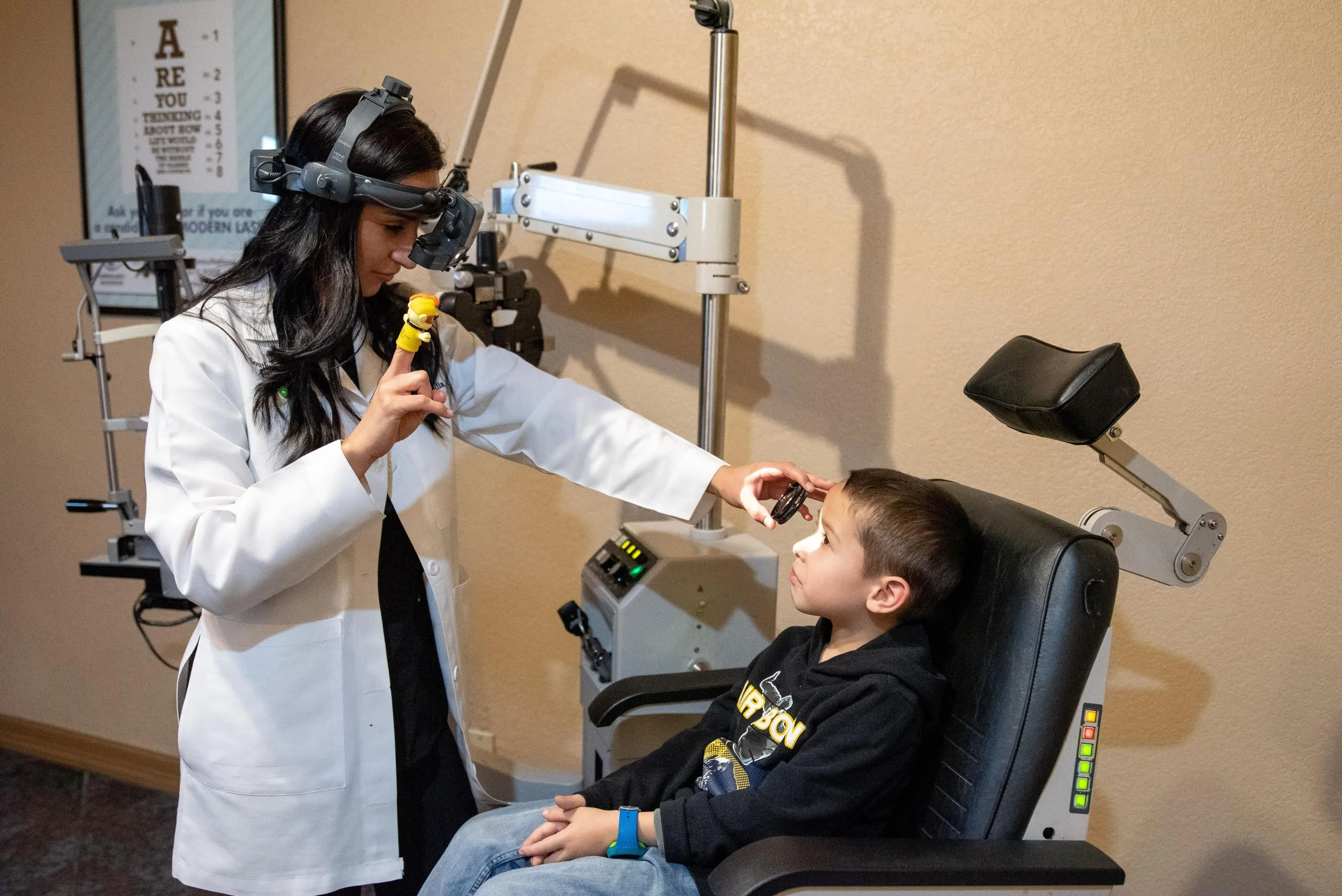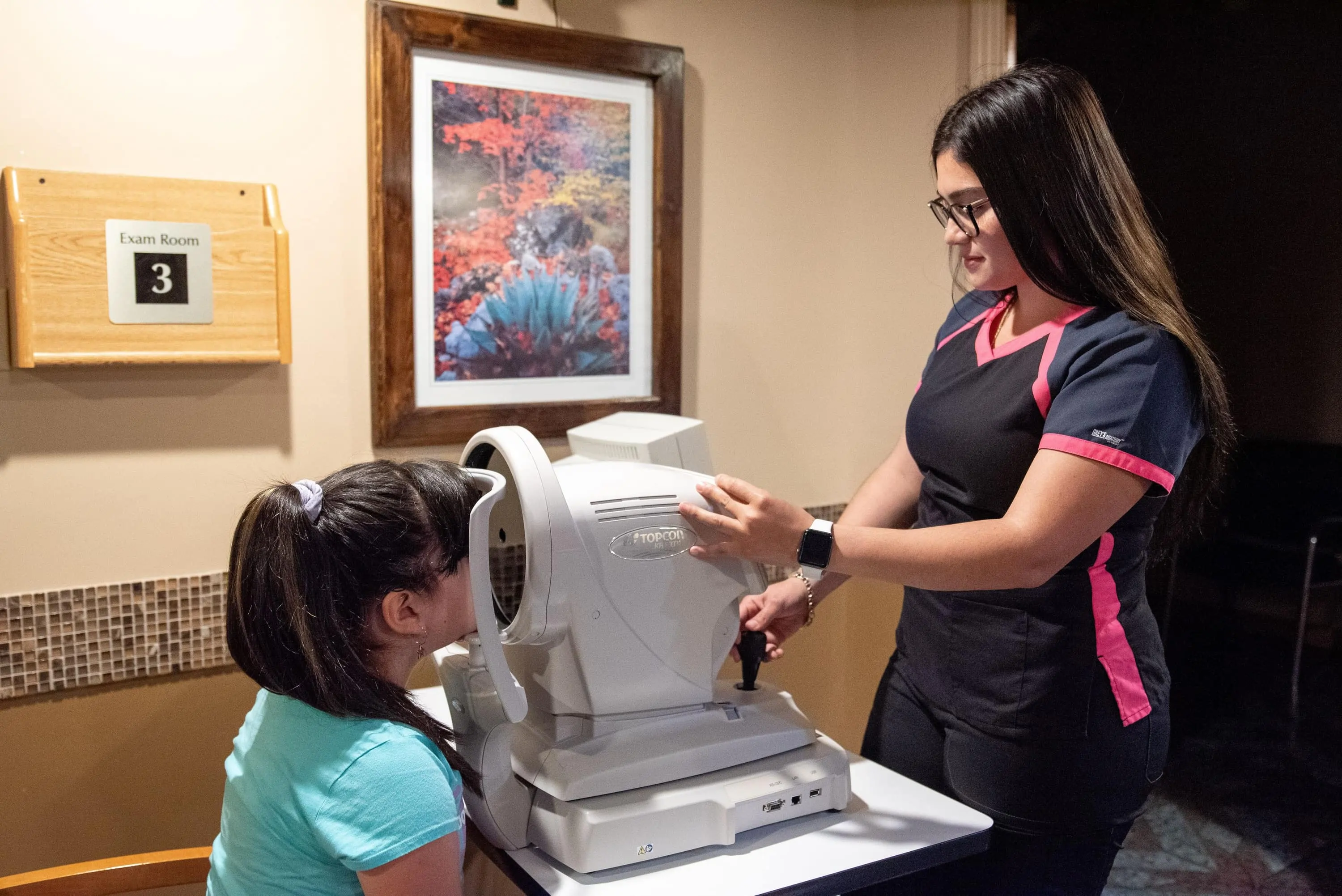American Optometric Association Recommended examination frequency for children (Asymptomatic/low risk):
| Birth through 2. | At 6 to 12 months of age. | At 6 to 12 months of age or as recommended. |
| 3 through 5 years old. | At least once between 3 and 5 years of age. | At least once between 3 and 5 years of age or as recommended. |
| 6 through 17 years old. | Before first grade and annually thereafter. | Before first grade and annually, or as recommended thereafter. |
Routine vision screenings offered at a school or pediatrician's office are not enough. In their initial stages, many vision and eye health conditions lack obvious signs or symptoms. Routine vision screenings cannot be relied on to catch most vision problems. Even if problems are detected, 61% of those children with a problem will not receive appropriate follow-up. Evidence demonstrates that the best course of action is following an annual eye exam schedule. The extent to which a child is at risk for the development of eye and vision problems determines the appropriate re-evaluation schedule. Children with ocular signs and symptoms require a prompt, comprehensive examination. Furthermore, the presence of certain risk factors may necessitate more frequent examinations based on professional judgment. Factors that play a key role in placing an infant, toddler or child at significant risk for eye and vision problems include the following:
- Prematurity, low birth weight, prolonged supplemental oxygen at birth.
- Family history of myopia, amblyopia, strabismus, retinoblastoma, congenital cataracts, metabolic or genetic disease.
- Infection of mother during pregnancy (e.g., rubella, toxoplasmosis, venereal disease, herpes, cytomegalovirus or human immunodeficiency virus).
- Maternal smoking, use of alcohol or illicit drug use during pregnancy.
- Cortical visual impairment.
- Difficult or assisted labor, which may be associated with fetal distress.
- High or progressive refractive error.
- Strabismus.
- Anisometropia.
- Academic performance problems.
- Known or suspected neurodevelopmental disorders.
- Systemic health conditions with potential ocular manifestations.
- Wearing contact lenses.\
- Functional vision in only one eye.
- Eye surgery or previous eye injury.
- Taking prescription or nonprescription drugs (e.g., over the counter medications, supplements, herbal remedies) with potential ocular side effects.




